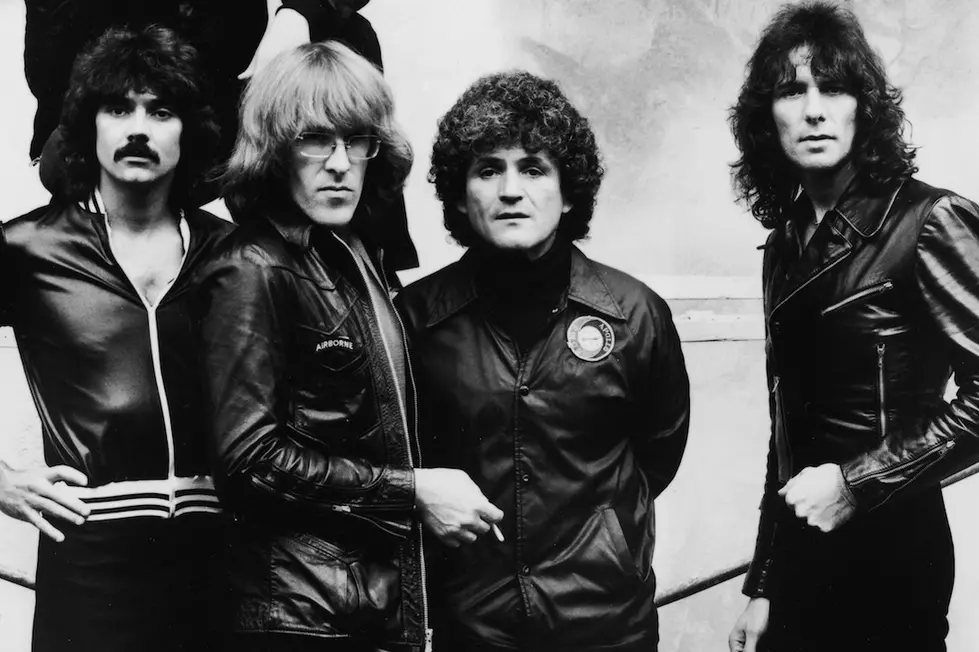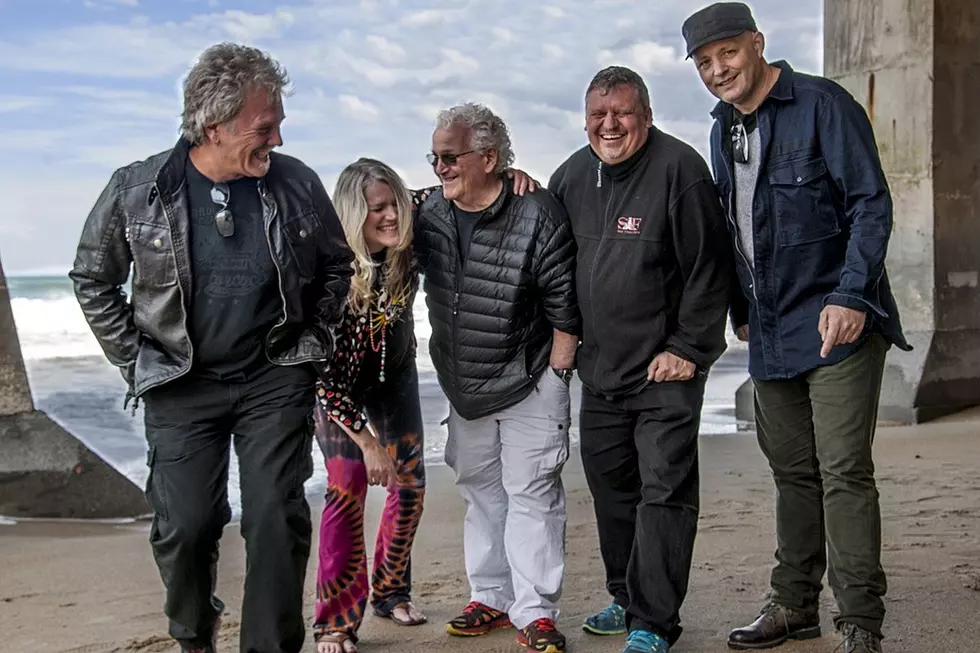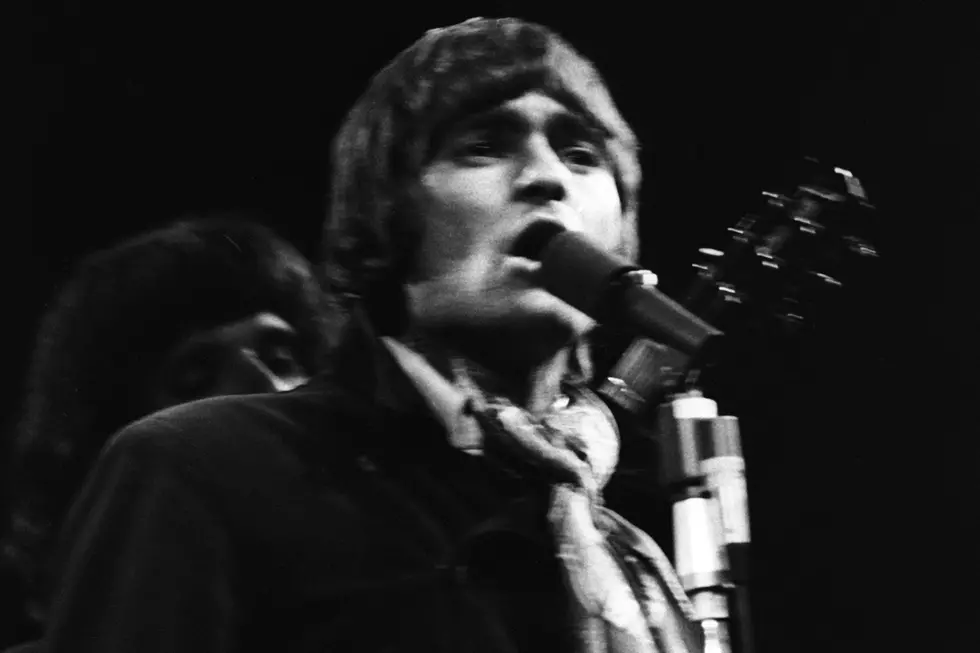
When Jefferson Starship Plugged In For ‘Freedom at Point Zero’
The twin departures of both Marty Balin and (briefly) Grace Slick gave Jefferson Starship an opportunity to update its sound in advance of new decade. That's how Freedom at Point Zero, issued on Nov. 1, 1979, ended up with a more straight-forward, more metallic approach.
Oddly enough, it also put the band on a collision course with a name-changing breakup, and then mega-popstardom. But that was later. For now, there was the success of their third highest-charting single ever, and a Top 10 finish for the crunchy Freedom at Point Zero.
Their shift toward arena rock was best heard on "Jane," a lead single that shot to No. 14 behind the fiery guitar work of stalwart Craig Chaquico. His co-writers included Paul Kantner and Dave Freiberg, who along with Chaquico and Slick had been with Jefferson Starship since it grew out of the old Jefferson Airplane configuration in January 1974. Multi-instrumentalist Pete Sears joined the original lineup of Jefferson Starship later that summer – as did Balin, their original lead singer.
Balin's replacement was as offbeat as it was instantly successful: Mickey Thomas had made his name on the breakout ballad "Fooled Around and Fell in Love" with Elvin Bishop, after working for years in R&B and gospel groups prior to that.
"I had just left the Elvin Bishop Band, and I was preparing to do a solo album. I was down in Miami with Bill Szymczyk (of Eagles fame) producing, and that’s when I got the call from the Jefferson Starship," Thomas admitted in 2013. "I’m thinking, based on my influences and where I was coming from at that point in time: 'How in the world is this going to fit?' I had recently left the Elvin Bishop Band, which was all about the blues and soul music and R&B and country and every other kind of roots or organic music you could think of. But I was flattered to get the call, and I at least owed them the courtesy of going over there and seeing what’s up. [Laughs.] We had several meetings, and couple of jam sessions. I was still rather hesitant. A few months went by, really. Finally, I thought: 'As crazy as this is, and as unlikely as it would be that this would work, there’s something there.' Where they were coming from, and where I was then, it was a meeting of styles that created something original."
Jefferson Starship ultimately settled on an approach more in keeping with new drummer Aynsley Dunbar's former band Journey. Notably, Freedom at Point Zero was the first of two projects with producer Ron Nevison, who had similar success smoothing out the edges of '70s products like Chicago, Kiss and Heart in this same era.
"We got a new singer, Mickey Thomas, who had blues and gospel roots to him," Chaquico said in 2012. "I always liked that style, with someone like Lou Gramm and Foreigner – or Bad Company and Paul Rodgers. I always like those kind of bluesy singers in rock. Mickey really had that going on. Whether or not he wanted to do rock was a big question, but when we had him over for a rehearsal, one of the first songs he did was one I wrote with that in mind, and it was perfect timing to get into songs that featured more guitar."
Occasionally, flashes of Jefferson Starship's former hippie-rock weirdness would appear. We hear, for instance, the beginnings of a concept featuring the character Lightning Rose, who would return for 1984's Nuclear Furniture. "Jane" itself features a lengthy guitar solo that might have been edited down by any other band hoping for airplay. Chaquico admits he fought tooth and nail to keep it just the way it was.
"I remember arguing over the guitar solo with our manager at that time," Chaquico said in a separate 2012 talk. "His point was, he came in with a stop watch and the guitar solo was too long. It will never get played on the radio, right? If you listen to the solo, I arranged it in such a way that when I came in there’s really not a lot going on – except for me and Aynsley. Everybody else is laying out, so you have to hear the guitar solo. It’s all that’s there! [Laughs.] The band backed me up, and we left the solo the way that it is, but our manager swore it would never be a hit. So, every time I hear it on the radio, it puts a smile on my face, because I knew I had to fight for every second of it! Literally. Our manager had a point about one thing though: I ran into some of the guys from Metallica and they said: 'Hey, man, that was one of our favorite songs, because no songs on the radio had long guitar solos back then.' [Laughs.} We pushed the envelope, and it actually did get played – thank God."
More often, however, Freedom at Point Zero unfolded like a canny play for broad acceptance, blending soul influences, a bit more guitar and a sound that mostly left behind the San Francisco-based influences that had defined Jefferson Starship to that point.
"They were going for a harder edge at that point in time," Thomas added. "Before that, it was all about 'Count on Me' and 'Miracles' – which are all fine, but all of them were sort of softer, mid-tempo ballads. Then, here we come with 'Jane.' That was quite a statement. And it worked, because when you think about it, a lot of what we think of as hard-rock bands from back in the day, it all goes back to the blues. With Led Zeppelin, Aerosmith, all of those bands, it was about the blues, really. So, it really kind of made sense. We got together and were really able to forge a new style that worked as Jefferson Starship."
"Jane" also represents a crossroads moment in sorting through the ugly breakup that followed Nuclear Furniture, when the late Kantner left – taking the "Jefferson" portion of the band's moniker. A core group featuring Thomas, Slick and Chaquico would go forward as Starship, scoring a string of huge pop hits with a still sleeker, synth-focused direction into the mid '80s.
"If you wanted to survive, if you wanted to continue to be a viable band and make records, and to stay together, then you better conform to the times," Thomas said. "At that point in time, it has reached a point that if you didn’t get Top 40 airplay, and you weren’t on MTV, then you just weren’t part of the game. You had to have that presence."
Nasty court cases ensued between members of the band and Kantner, though at this point he still took the lead on tracks like "Girl with the Hungry Eyes" (which charted at No. 55) and "Things to Come." Freiberg lasted until 1985 with Starship, then returned to Kantner's Jefferson Starship in 2005. (The late Balin also occasionally worked with Kantner beginning in the '00s.) Sears was gone by 1987. Slick split again in 1988, and Chaquico – who to that point was the only member to have played in every different Jefferson Starship/Starship lineup – followed in 1990, just after the release of 1989's Love Among the Cannibals.
"Grace had left the band, and then Paul was suing the band," Thomas said. "Then Grace was suing Paul, and Paul was suing Grace – and they were suing our manager. That’s kind of what made me come up with the title and song 'Love Among the Cannibals.' I thought: 'Wow, these people kind of exemplify the whole love generation of the late '60s, peace and love and wearing flowers in your hair and let’s change the world – and now all they want to do is sue each other.' [Laughs.] So, 'Love Among the Cannibals' was my statement about all of that."
Later, a shaky truce emerged. Both Thomas and Kantner toured with their own versions of Jefferson Starship / Starship until Kantner's death in 2016. "Jane" was the only song that both editions regularly included in their set lists.
See Jefferson Airplane Among Rock’s Most Underrated Albums
More From Ultimate Classic Rock









